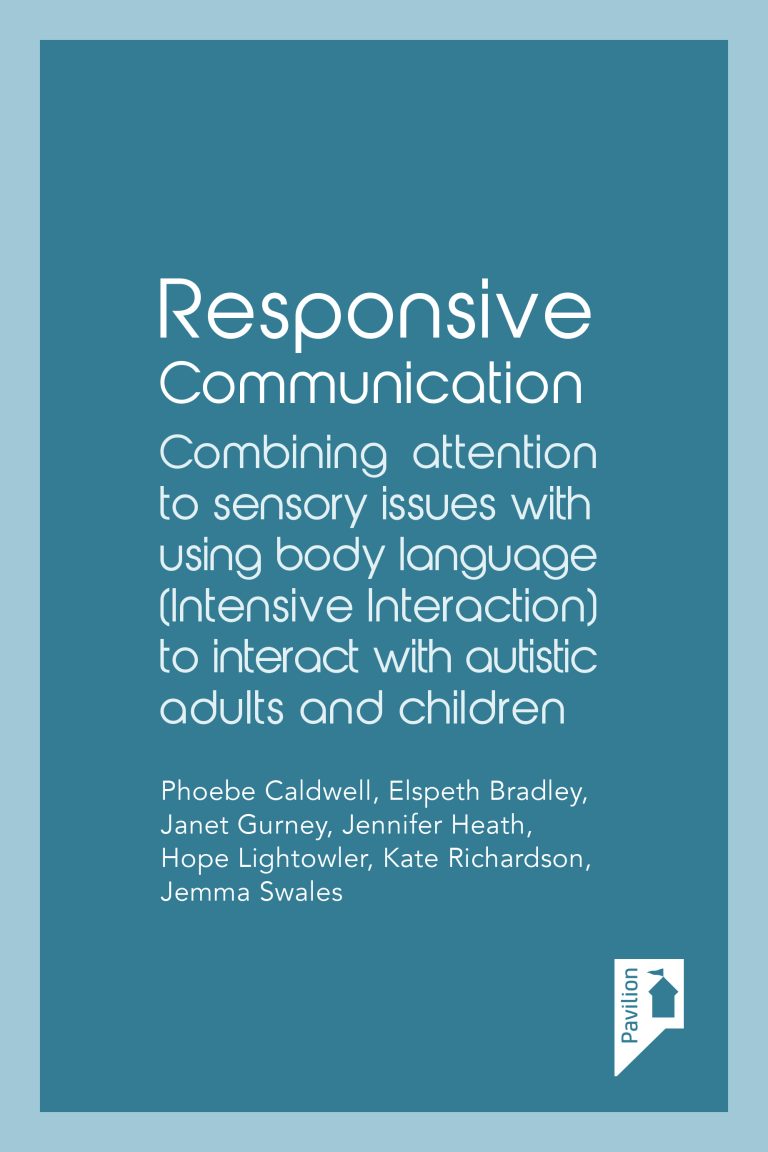How to Speak in Front of People?
Speaking in front of people can be intimidating, but with practice and preparation, you can become a confident speaker. We will provide you with practical tips and strategies to help you overcome your fear and deliver a compelling and engaging speech or presentation.
Whether you’re delivering a speech at a conference, presenting a proposal to colleagues, or speaking in a public setting, these techniques will help you speak confidently and effectively in front of any audience. From controlling your nerves to using body language effectively, we will cover all aspects of public speaking to ensure that you leave a lasting impression on your listeners.
So, let’s dive in and discover the secrets of becoming a confident public speaker.
Why Public Speaking Skills Are Essential
Public speaking skills are essential for effective communication in front of an audience. Mastering the art of speaking in front of people can boost confidence, convey ideas clearly, and leave a lasting impression on listeners.
Public speaking skills in today’s world:
Public speaking skills are not just limited to individuals who aspire to become professional speakers. In fact, these skills are increasingly essential in today’s world for various reasons. Whether you’re giving a presentation at work, participating in a debate, or even making a toast at a wedding, having effective public speaking skills can make a significant difference in how well your message is received.
Let’s explore the reasons why these skills are crucial in our modern society.
Benefits of effective public speaking:
Effective public speaking has numerous benefits that can improve multiple areas of your life. Here are some key advantages to developing strong public speaking skills:
- Build confidence: Speaking in front of people can be nerve-wracking, but the more you practice and improve your skills, the more confident you become. Building confidence in public speaking can boost your overall self-esteem and make you feel more comfortable in different social situations.
- Enhance communication: Public speaking skills go beyond the ability to speak in front of an audience. They also enhance your overall communication skills. When you can effectively articulate your thoughts and ideas in a clear and concise manner, you become a more effective communicator in both personal and professional settings.
- Influence others: The ability to speak persuasively is a powerful tool. Effective public speaking allows you to express your opinions, convince others of your ideas, and inspire action. Whether you’re giving a motivational speech or presenting a business proposal, being able to influence others with your words can create opportunities for success.
- Career advancement: Strong public speaking skills are highly valued in the professional world. Employers look for individuals who can confidently communicate with clients, deliver engaging presentations, and lead meetings effectively. Having this skill set can open doors to career progression and increase your chances of success in various industries.
- Networking opportunities: Public speaking often involves presenting in front of a diverse audience. This provides an excellent opportunity for networking, as you may meet individuals who share similar interests or goals. Engaging with others through public speaking can lead to valuable connections and potential collaborations in both personal and professional life.
- Personal growth: Developing public speaking skills can be a transformative personal growth journey. It forces you to step out of your comfort zone, overcome fears and insecurities, and continuously improve your communication abilities. This process of growth not only impacts your public speaking prowess but also extends to other aspects of your life, such as building resilience and developing strong leadership qualities.
Public speaking skills are essential in today’s world, offering a multitude of benefits ranging from personal growth to career advancement. Whether you’re looking to boost your confidence, enhance your communication abilities, or make a lasting impression, investing time and effort into improving your public speaking skills is undoubtedly worthwhile.
So, take the initiative to embrace public speaking and unlock its tremendous potential in your life.
Overcoming Fear And Nervousness
Learn how to overcome fear and nervousness when speaking in front of people with these practical tips and strategies. Gain confidence, improve your public speaking skills, and connect with your audience effortlessly.
Understanding The Fear Of Public Speaking
Public speaking can often be anxiety-inducing, even for the most confident individuals. Understanding the fear of public speaking is the first step towards overcoming it. Here are some key points to consider:
- Common Causes of Fear: A fear of public speaking can stem from various factors, such as a lack of confidence, fear of judgment, past negative experiences, or even perfectionism.
- Fight-or-Flight Response: The fear of public speaking triggers the body’s natural fight-or-flight response, leading to physical symptoms like increased heart rate, sweating, and shaky hands.
- Perceived Threat: People often view public speaking as a threat to their self-image, leading to the fear of being embarrassed, rejected, or judged negatively.
Techniques To Overcome Fear And Nervousness
While it may seem overwhelming, there are effective techniques to overcome the fear and nervousness associated with public speaking. Here are some strategies to help you confidently take the stage:
- Prepare and Practice: Thorough preparation and practice instill a sense of confidence and familiarity with your material. Rehearse your speech multiple times, paying attention to your body language and voice modulation.
- Visualize Success: Close your eyes and visualize yourself delivering a successful presentation. Imagine the audience engaged, applauding, and appreciating your words. This positive visualization can alleviate anxiety and build confidence.
- Deep Breathing and Relaxation Techniques: Deep breathing exercises and relaxation techniques, such as progressive muscle relaxation or meditation, help combat anxiety by calming the nervous system.
- Focus on the Audience: Instead of fixating on your own fears, shift your focus to the audience. Remember, you are speaking to share valuable information or engage in meaningful conversation. Concentrating on the audience’s needs can redirect your focus and reduce nervousness.
- Start Small: Begin by speaking in front of smaller, more familiar audiences such as friends, family, or colleagues. Gradually increase the audience size to become more comfortable with larger gatherings.
- Positive Self-talk: Combat negative thoughts and self-doubt with positive affirmations. Remind yourself of your knowledge, expertise, and the value you bring to the table. Encourage yourself with phrases like, “I am well-prepared and capable of delivering a great speech.”
- Reframe Nervousness as Excitement: Reframe the physical sensations of nervousness as excitement. Embrace the energy surge and redirect it towards delivering an enthusiastic and engaging presentation.
- Engage in Public Speaking Opportunities: The more you expose yourself to public speaking opportunities, the less intimidating it becomes. Join public speaking clubs, attend workshops, or volunteer for presentations whenever possible.
- Learn from Experience: Embrace each public speaking experience, regardless of its outcome, as a chance to grow and improve. Take note of what went well and areas where you can enhance your performance for the future.
Overcoming the fear of public speaking is possible with patience, practice, and a positive mindset. Implement these techniques to gradually build your confidence and deliver impactful presentations. Remember, everyone starts somewhere, and the more you embrace public speaking, the more comfortable and proficient you’ll become.
Preparing For A Successful Presentation
Learn how to confidently speak in front of a crowd with these essential tips on preparing for a successful presentation. Discover strategies to captivate your audience, project confidence, and deliver your message effectively.
Researching Your Audience And Topic
- Before you step onto the stage, take the time to research your audience and topic. This will help you connect with your audience and deliver a presentation that resonates with them. Here are some steps to consider:
- Understand your audience: Find out who your audience is, their demographics, and their interests. This will help you tailor your message to their needs and expectations.
- Research your topic: Dive deep into your topic and gather all the necessary information. Make sure you have a comprehensive understanding of the subject matter before presenting it to others.
- Identify key points: Determine the key points you want to convey to your audience. These should be the most important and relevant aspects of your topic.
- Use credible sources: Ensure that your information comes from reliable and authoritative sources. This will add credibility to your presentation and help build trust with your audience.
Developing A Clear And Concise Message
- A well-crafted message is the backbone of any successful presentation. To develop a clear and concise message, follow these guidelines:
- Define your main goal: Clarify the purpose of your presentation. What do you want your audience to take away from it?
- Craft a strong opening: Grab your audience’s attention from the beginning. Start with a compelling story, statistic, or thought-provoking question.
- Stay focused and organized: Keep your message coherent and easy to follow. Break it down into sections or key points to maintain clarity.
- Use simple language: Avoid jargon and technical terms that may confuse your audience. Explain complex concepts in a way that everyone can understand.
- Use visuals to enhance your message: Incorporate relevant images, graphs, or charts to support your key points. Visual aids can help keep your audience engaged and reinforce your message.
Creating Engaging Visual Aids
- Visual aids can significantly enhance your presentation by making it more visually appealing and engaging. Here’s how you can create captivating visuals:
- Choose the right type of visuals: Select visuals that best complement your message, such as images, infographics, or slides.
- Keep it simple: Avoid cluttering your visuals with excessive text or complex graphics. Keep them clean, easy to read, and visually appealing.
- Use colors strategically: Opt for colors that align with your brand or topic. Make sure they are visually pleasing and enhance the overall message.
- Incorporate compelling images: Use relevant and high-quality images that resonate with your audience. This can evoke emotions and make your presentation more relatable.
- Include key points: Use visuals to highlight key points or statistics. This will help reinforce your message and make it easier for your audience to remember.
Remember, preparing for a successful presentation involves thorough research, a clear and concise message, and engaging visual aids. By following these steps, you’ll be well-prepared to deliver a memorable and impactful presentation in front of an audience.
Delivering An Impactful Presentation
Discover the secrets to delivering an impactful presentation and speaking confidently in front of people. Gain practical tips and techniques to engage your audience and leave a lasting impression.
Your ability to deliver an impactful presentation can greatly influence how well your message resonates with your audience. In this section, we will explore the importance of body language and non-verbal cues, techniques for confident and effective delivery, and the use of vocal variety and tone to engage the audience.
Importance Of Body Language And Non-Verbal Cues:
- Body language and non-verbal cues play a crucial role in communication, as they can convey emotions, attitudes, and understanding without the use of words.
- Strong, confident posture and open gestures can command attention and establish credibility.
- Maintaining eye contact with the audience fosters connection and shows attentiveness.
- Facial expressions should be authentic and reflect the appropriate emotions to enhance your message.
Techniques For Confident And Effective Delivery:
- Practice, practice, practice! Rehearse your presentation to build confidence and familiarity with your content.
- Start with a strong and engaging opening to capture the audience’s attention right from the beginning.
- Structure your presentation with a clear introduction, main points, and a conclusion to ensure a logical flow.
- Use visual aids such as slides or props to reinforce key points and maintain audience engagement.
Using Vocal Variety And Tone To Engage The Audience:
- Vary your tone and pitch to bring life to your words, creating interest and emphasizing important points.
- Speak clearly and enunciate thoughts, ensuring every word is heard and understood.
- Utilize pausing effectively to add emphasis, allow for reflection, and build suspense.
- Use a conversational and enthusiastic tone to connect with your audience on a personal level.
Remember, the delivery of your presentation is just as important as the content itself. By paying attention to your body language, using effective delivery techniques, and engaging your audience with vocal variety and tone, you can leave a lasting impact and ensure your message is heard loud and clear.
Engaging The Audience
Speaking in front of people can be daunting, but engaging your audience is key. Build rapport by maintaining eye contact, using expressive gestures, and speaking with confidence. Use stories, examples, and interactive elements to captivate your listeners and make your message memorable.
Captivating Attention With A Strong Opening
- Begin with a thought-provoking question: Engaging the audience from the very start is crucial in public speaking. Ask the audience a question that ignites their curiosity and prompts them to reflect on the topic at hand. For example: “Have you ever wondered what it takes to captivate an audience and leave a lasting impression?”
- Share a relevant personal story: Stories have the power to captivate listeners and make the message relatable. Begin with a brief anecdote that connects to the topic and highlights its importance. For instance: “Years ago, I stood nervously before a large audience, unsure of how to engage them. Little did I know, a simple technique would transform my delivery and leave the crowd hanging onto my every word.”
- Start with a surprising fact or statistic: Nothing grabs attention quite like an unexpected piece of information. Share a surprising fact or statistic that relates to your topic and sparks curiosity. For example: “Did you know that within the first few seconds of a presentation, people form lasting opinions about the speaker? This means that your opening has the power to make or break your presentation, influencing how the audience perceives you throughout.”
Interactive Techniques To Keep The Audience Engaged
- Use multimedia elements: Incorporating visual aids, videos, or interactive elements into your presentation creates a dynamic experience for the audience. Visuals can help illustrate complex concepts, evoke emotions, and maintain interest.
- Encourage audience participation: Engage with your audience by posing questions, soliciting opinions, or conducting quick polls. This creates an interactive atmosphere where attendees feel involved and invested in the discussion.
- Incorporate storytelling: Weaving storytelling into your presentation not only captivates the audience but also helps convey your message in a memorable way. Craft narratives that relate to your topic and tie them into the main points of your speech.
- Utilize humor: Injecting appropriate humor into your presentation lightens the mood and keeps the audience engaged. Clever anecdotes, witty remarks, or even well-timed jokes can make your content more relatable and enjoyable.
- Break content into digestible chunks: Presenting information in small, manageable sections helps prevent information overload and maintains audience engagement. Use bullet points, headers, or slides to clearly outline your main points and make it easier for the audience to follow along.
Handling Questions And Feedback
- Encourage questions throughout: Create an environment where audience members feel comfortable asking questions or seeking clarification. Pause periodically during your presentation to invite questions, and ensure you address them promptly and respectfully.
- Active listening: When handling questions or feedback, actively listen to what the audience member is saying. Maintain eye contact, nod in agreement, and rephrase their question to ensure understanding. This shows respect and encourages further engagement.
- Provide thoughtful responses: Respond to questions and feedback in a concise and clear manner, ensuring your answers address the concerns or queries raised. Use real-life examples or metaphors to make your response relatable and memorable.
- Manage time effectively: Be mindful of the time allocated for questions and feedback to ensure you can address as many as possible while staying within the designated timeframe. Politely, but assertively, steer the conversation back on track if it veers off-topic.
- Appreciate feedback: Whether positive or constructive, appreciate the feedback given by the audience. Thank them for their input and highlight how their insights contribute to your growth as a speaker.
Remember, engaging the audience involves capturing their attention from the start, incorporating interactive techniques throughout, and handling questions and feedback with attentiveness and respect. By implementing these strategies, you’ll be able to deliver impactful presentations that leave a lasting impression on your audience.

Credit: www.icc2009.cl
Mastering The Art Of Persuasion
Master the art of persuasion by learning how to speak confidently and effectively in front of people. Enhance your communication skills and captivate your audience with powerful techniques that leave a lasting impact.
Speaking in front of people can be a daunting task, especially when it comes to persuading your audience. However, mastering the art of persuasion can make all the difference in delivering a compelling speech. In this section, we will explore the principles of persuasion, the use of storytelling and anecdotes, as well as the importance of establishing credibility and trust.
Understanding The Principles Of Persuasion:
- Establishing common ground: Find common interests or beliefs with your audience to create a connection and build rapport.
- Appealing to emotions: Tap into your audience’s emotions by using storytelling, personal anecdotes, or vivid imagery to evoke empathy and create a lasting impact.
- Providing evidence and data: Back up your arguments with credible evidence, statistics, or case studies to lend credibility and support your claims.
- Using persuasive language: Employ rhetorical devices, such as metaphors, similes, and repetition, to enhance the persuasiveness of your message.
- Addressing counterarguments: Anticipate potential objections or doubts and address them proactively to strengthen your argument and gain trust.
Using Storytelling And Anecdotes To Persuade:
- Engaging the audience: Craft a compelling narrative that grabs your audience’s attention from the start and keeps them engaged throughout your speech.
- Creating relatable characters: Develop relatable characters within your stories or anecdotes that your audience can connect with on an emotional level.
- Using vivid descriptions: Paint a vivid picture with your words, allowing your audience to visualize the events and emotions, making the story more impactful.
- Highlighting lessons and morals: Connect the story to your main message or lesson by highlighting the moral or takeaway that you want your audience to embrace.
Establishing Credibility And Trust:
- Demonstrating expertise: Showcase your knowledge and expertise on the subject matter by sharing relevant experiences, credentials, or achievements.
- Using credible sources: Reference trustworthy sources and experts in your field to reinforce the validity of your arguments.
- Engaging in audience interaction: Encourage audience participation through Q&A sessions or interactive activities, demonstrating your willingness to engage and address their concerns.
- Maintaining authenticity: Be genuine and authentic in your delivery, allowing your true personality to shine through, which helps establish trust with your audience.
By understanding the principles of persuasion, utilizing storytelling techniques, and establishing credibility and trust, you can master the art of speaking in front of people and deliver persuasive and impactful speeches. Remember, practice makes perfect, so don’t shy away from opportunities to engage and persuade audiences.
Overcoming Common Challenges
Improve your public speaking skills by overcoming common challenges. Learn how to confidently address a crowd and deliver a compelling speech.
Speaking in front of people can be a nerve-wracking experience, but by addressing common challenges head-on, you can feel more confident and deliver a powerful presentation. Here are some effective strategies to overcome obstacles that may arise during your speech:
Dealing With Technical Difficulties:
- Prepare ahead of time by familiarizing yourself with the equipment and technology you will be using.
- Have a backup plan in case there are technical issues. This could include bringing printed materials or being able to present without visual aids if necessary.
- Test your equipment and connectivity before the presentation to ensure everything is working properly.
- Stay calm if technical difficulties do occur, and try to problem-solve quickly. Reassure the audience that you will resolve the issue and ask for their patience.
Handling Interruptions And Distractions:
- Acknowledge and address interruptions politely and professionally. Take a moment to listen or respond, and then bring the focus back to your presentation.
- Maintain eye contact and stay engaged with your audience to minimize distractions. This will help to hold their attention and discourage interruptions.
- If external disturbances persist, consider pausing briefly or adjusting your volume to regain the audience’s focus.
- Practice active listening skills and be prepared to adapt your presentation if necessary based on audience feedback or questions.
Managing Time Effectively:
- Develop a clear agenda or outline for your presentation to ensure that you cover all necessary points within the given time frame.
- Practice your speech and time yourself to get an understanding of how long each section should take.
- Set reminders or use visual cues to keep track of time during your presentation.
- Be flexible and ready to adjust your pace if needed. If you realize you are running out of time, prioritize the most essential information and skip less critical details.
By addressing technical difficulties with preparation and adaptability, handling interruptions and distractions with professionalism, and managing time effectively, you can overcome common challenges that may arise when speaking in front of people. These strategies will help you stay focused, maintain your confidence, and deliver a successful presentation.
Practice And Continuous Improvement
Enhancing your public speaking skills requires consistent practice and continuous improvement. By dedicating time to regularly speak in front of people, you can build confidence and refine your communication abilities. With each opportunity, you can learn from your experiences and make adjustments to become a more effective and engaging speaker.
Importance Of Practice And Rehearsal
Speaking in front of people can be nerve-wracking, but with practice and continuous improvement, anyone can become a confident and effective speaker. By dedicating time to rehearse your presentations and speeches, you not only boost your self-assurance but also ensure a polished delivery that resonates with your audience.
Here’s why practice and rehearsal are vital:
- Mastery of content: Practicing your speech allows you to become intimately familiar with the material. This familiarity enables you to speak confidently, without relying on notes or stumbling over your words.
- Smooth delivery: Regular practice helps improve the flow and delivery of your presentation. It allows you to find the right cadence, pause when necessary, and use appropriate body language to engage your listeners effectively.
- Overcoming stage fright: The more you practice, the more comfortable and at ease you will become in front of an audience. Consistent rehearsal builds confidence and reduces the anxiety associated with public speaking.
- Time management: By practicing your speech, you gain a better understanding of the timing required for each section. This helps you stay within the allotted time and ensures a well-paced presentation.
- Adapting to unforeseen circumstances: Practice prepares you to handle unexpected situations during your speech, such as interruptions or technical issues. With enough rehearsal, you can calmly address these challenges without losing your train of thought.
Seeking Feedback And Learning From Mistakes
Feedback is a valuable tool for growth and improvement. It allows you to identify areas that need attention, understand what works well, and refine your public speaking skills. Here’s why seeking feedback and learning from mistakes is crucial:
- Gain different perspectives: Feedback from others provides fresh insights and alternative viewpoints. This input helps you understand how your speech is perceived by different audience members, giving you valuable context for improvement.
- Identify strengths and weaknesses: Constructive feedback highlights both your strong points and areas that need improvement. Knowing your strengths enables you to emphasize them further, while understanding your weaknesses helps you address them effectively.
- Enhance content and delivery: Feedback can shed light on ways to enhance your content, refine your messaging, and make your delivery more engaging. By incorporating feedback into your practice, you can elevate the impact of your speech.
- Address blind spots: Sometimes, we are unaware of certain habits or quirks that may distract or hinder our communication. Feedback helps you uncover blind spots and work on any speech-related challenges that you may not be aware of.
- Learn from mistakes: Every public speaking experience offers lessons that can benefit your future performances. By actively seeking feedback and learning from your mistakes, you can continuously refine your skills and become a more effective speaker.
Continuous Improvement Of Public Speaking Skills
Public speaking is a skill that can always be improved. Striving for continuous growth ensures that you become a more confident, persuasive, and impactful speaker. Here’s why focusing on continuous improvement is necessary:
- Expand your repertoire: Emphasizing continuous improvement encourages you to explore different aspects of public speaking, such as vocal variety, storytelling techniques, and audience engagement strategies. This expansion broadens your skill set and makes you a more versatile speaker.
- Embrace new challenges: Continuously pushing yourself outside your comfort zone allows you to tackle new speaking opportunities with confidence. By accepting fresh challenges, you deepen your expertise and develop adaptability in various speaking contexts.
- Stay up-to-date: Through continuous improvement, you can stay current with trends, best practices, and evolving audience expectations. This knowledge ensures that your speeches remain relevant and impactful in an ever-changing world.
- Reflect and refine: Regularly assessing your performance and seeking ways to refine it is essential for growth. By reflecting on your speaking engagements, you can identify areas for improvement, make necessary adjustments, and continuously evolve as a speaker.
- Inspire and influence: As you consistently improve your public speaking skills, you inspire and influence others to do the same. Your growth becomes a model for those who look up to you, creating a positive impact in both personal and professional realms.
Remember, practice, seeking feedback, and continuous improvement are the keys to becoming an effective and confident public speaker. Embrace these principles, and watch your speaking skills soar. Now, go ahead and start honing your craft!
Resources For Further Learning
Discover valuable resources to enhance your public speaking skills and conquer your fear of speaking in front of people. Gain confidence and learn effective techniques through practical tips, expert advice, and interactive courses offered by experienced professionals. Embark on your journey to becoming a compelling and persuasive speaker with these curated resources for further learning.
If you’re looking to enhance your public speaking skills, there are various resources available that can help you improve your confidence, delivery, and overall presentation. Whether you prefer books, courses, or online resources, there are plenty of options to choose from.
Here are some recommended resources to aid you in your journey to becoming a more effective speaker:
Books:
- “TED Talks: The Official TED Guide to Public Speaking” by Chris Anderson: A comprehensive guide to public speaking, written by the head of TED. This book provides valuable insights on crafting and delivering impactful presentations.
- “Speak Like Churchill, Stand Like Lincoln: 21 Powerful Secrets of History’s Greatest Speakers” by James C. Humes: Learn from renowned speakers of the past and discover their techniques and strategies to inspire and captivate an audience.
- “The Quick and Easy Way to Effective Speaking” by Dale Carnegie: With practical tips and advice, this classic book offers guidance on building confidence, organizing thoughts, and delivering persuasive speeches.
Courses:
- Toastmasters International: Joining a local Toastmasters club can provide you with a supportive community of individuals who share your goals of improving public speaking skills. You’ll have opportunities to practice speaking, receive feedback, and develop your communication abilities.
- Coursera: Explore the various public speaking courses available on Coursera, such as “Introduction to Public Speaking” and “Speaking to Influence: Public Speaking for Leaders.” These courses offer structured modules and often include video lectures and interactive assignments.
- LinkedIn Learning: Discover a range of public speaking courses on LinkedIn Learning, such as “Public Speaking Foundations” and “Presentation Design and Delivery.” These courses are taught by industry professionals and cover various aspects of effective communication.
Online Resources:
- TED Talks: Watch TED Talks online to observe exceptional speakers and gain inspiration. Pay attention to their delivery style, storytelling techniques, and use of visuals to enhance their presentations.
- Public Speaking Tips: Websites like The Muse and Toastmasters offer valuable tips, articles, and videos on public speaking. Learn from experienced speakers who share their insights and provide practical advice to help you improve.
- Speech Analysis Videos: Online platforms like YouTube have numerous speech analysis videos that dissect famous speeches. These videos break down the speaker’s techniques, delivery style, and overall effectiveness, providing valuable lessons.
Remember, improving your public speaking skills is a continuous process, so don’t be afraid to explore different resources, practice regularly, and seek feedback to refine your abilities over time.
Frequently Asked Questions For How To Speak In Front Of People
How Can I Improve My Speaking In Front Of People?
To improve speaking in front of people: 1. Practice regularly and seek opportunities to speak in public. 2. Focus on your body language and maintain eye contact with the audience. 3. Prepare and organize your thoughts beforehand to deliver a clear message.
4. Get feedback from trusted individuals and work on improving areas of weakness.
How Do You Start A Speech In Front Of People?
To start a speech in front of people, follow these steps: 1. Begin with a captivating opening line to grab their attention. 2. Introduce yourself and establish credibility or expertise on the topic. 3. Clearly state the purpose or main idea of your speech.
4. Engage the audience by asking a thought-provoking question or sharing a relevant anecdote.
Why Can’T I Speak In Front Of People?
Speaking in front of people can be difficult due to nervousness, fear of judgment, lack of confidence, or past negative experiences.
How Can I Overcome My Fear Of Public Speaking?
To overcome your fear of public speaking, start by practicing in front of a small and supportive audience. Focus on deep breathing and positive visualization to calm your nerves. Gradually increase the size of your audience and seek feedback to improve your skills.
Remember, practice makes confident!
Conclusion
Becoming an effective speaker in front of people is a skill that can be honed with practice and dedication. By following these tips, such as preparing and practicing your speech, managing your nervousness, engaging with your audience, and using effective body language, you can confidently convey your message and connect with your listeners.
Remember, the key is to be authentic and genuine, allowing your passion and enthusiasm to shine through. By employing these strategies, you can overcome your fear of public speaking and become a confident and persuasive communicator. So, embrace the opportunity to speak in front of people as a chance for personal growth and professional advancement.
Don’t let fear hold you back – go out there and make an impact through your powerful words and presence!





